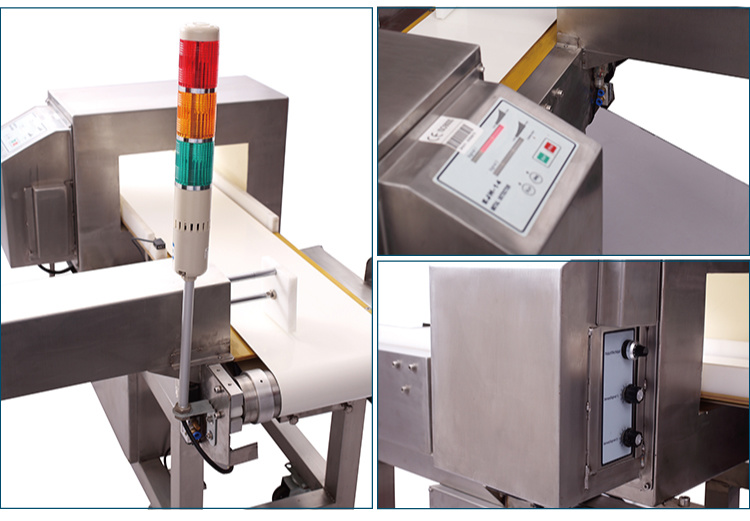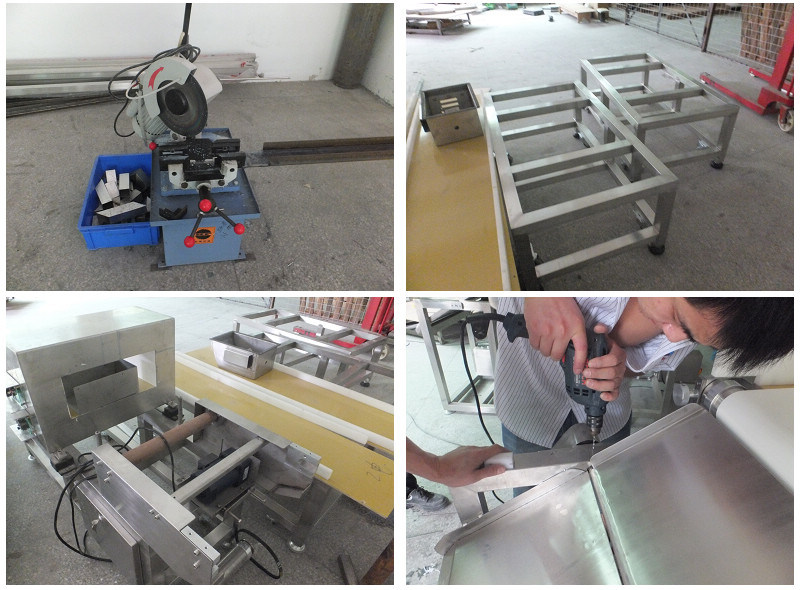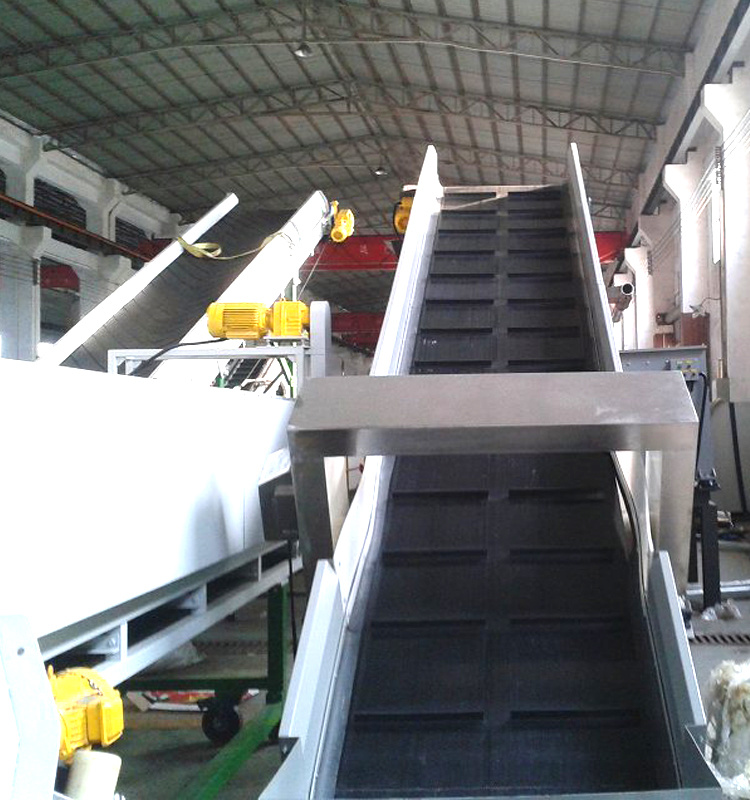
In the food production industry, metal is one of the most commonly found contaminant materials in food. Metal can be introduced at all stages of processing of food, as it is most commonly used in the construction of machinery, handling equipment and ancillary utensils. A metal detector for the food industry can help ensure the safety and integrity of a wide range of unpackaged, packaged or bulk goods, by identifying metal contaminants during processing or packaging and helping to ensure that they do not enter food that we eat. As part of a HACCP program, metal detection systems can be utilised to provide compliance with food safety standards, retailers' code of practice, legislation and industry guidance.
Â
Types of Contaminants
There are three main groups of metallic contaminants that a food metal detector can sense:
Ferrous
Non Ferrous
Stainless Steel detection depends on the magnetic or conductive properties of the contaminant
Â
The ability for a conventional metal detector used in the food industry to detect metallic contaminants depends upon their conductivity and magnetic permeability:
Ferrous metal contaminants are both magnetic and conductive and are easily detected.
Although they are not magnetic, Non-Ferrous contaminants are good conductors and can be detected relatively easily.
Stainless Steel foreign bodies are the most difficult to pick-up as they are usually non-magnetic and a poor electrical conductor. The ability to detect stainless steel is also hindered when the product is wet or has a high salt content.
Â
If there are other types of contaminants (glass, calcified bone, ceramics, stone) to be detected, then an X-ray inspection system for food will offer enhanced detection capabilities.
Â
Features:
Â
Specifications:
Material: 304 type stainless steel for detector, 201 type stainless steel for frame, PVC belt.
Belt length (mm): 1600mm.
Conveyor height from belt to ground 650mm + 100mm feet adjuatable, with wheels moveable.
Alarm: buzzer / warning lights.
Rejection system:
Flow speed: 25 m/ min fixed or 10 to 40 m / min variable.
Flow direction: from left to right or opposite(facing control panel).
Language for operation system: English/Chinese.
Electronic source: AC110V/220V, 50/60Hz, power: 90/120/200W.
Aperture/ Opening inner size & Sensitivity ability:
Opening Width
30
40
50
60
70
Opening Height
10
15
20
30
35
Ferrous
Φ0.8mm
Φ1.0mm
Φ1.2mm
Φ1.8mm
Φ2.5mm
Non Ferrous
Φ1.2mm
Φ1.5mm
Φ1.8mm
Φ2.5mm
Φ3.0mm
Stainless steel(304)
Φ1.8mm
Φ2.0mm
Φ 2.5mm
Φ3.5mm
Φ4.0mm
 



Â
High Sensitivity FDA Grade Conveyor Belt Food Metal Detector
In the food production industry, metal is one of the most commonly found contaminant materials in food. Metal can be introduced at all stages of processing of food, as it is most commonly used in the construction of machinery, handling equipment and ancillary utensils. A metal detector for the food industry can help ensure the safety and integrity of a wide range of unpackaged, packaged or bulk goods, by identifying metal contaminants during processing or packaging and helping to ensure that they do not enter food that we eat. As part of a HACCP program, metal detection systems can be utilised to provide compliance with food safety standards, retailers' code of practice, legislation and industry guidance.
Â
Types of Contaminants
There are three main groups of metallic contaminants that a food metal detector can sense:
Ferrous
Non Ferrous
Stainless Steel detection depends on the magnetic or conductive properties of the contaminant
Â
The ability for a conventional metal detector used in the food industry to detect metallic contaminants depends upon their conductivity and magnetic permeability:
Ferrous metal contaminants are both magnetic and conductive and are easily detected.
Although they are not magnetic, Non-Ferrous contaminants are good conductors and can be detected relatively easily.
Stainless Steel foreign bodies are the most difficult to pick-up as they are usually non-magnetic and a poor electrical conductor. The ability to detect stainless steel is also hindered when the product is wet or has a high salt content.
Â
If there are other types of contaminants (glass, calcified bone, ceramics, stone) to be detected, then an X-ray inspection system for food will offer enhanced detection capabilities.
Â
Features:
Â
Specifications:
Material: 304 type stainless steel for detector, 201 type stainless steel for frame, PVC belt.
Belt length (mm): 1600mm.
Conveyor height from belt to ground 650mm + 100mm feet adjuatable, with wheels moveable.
Alarm: buzzer / warning lights.
Rejection system:
Flow speed: 25 m/ min fixed or 10 to 40 m / min variable.
Flow direction: from left to right or opposite(facing control panel).
Language for operation system: English/Chinese.
Electronic source: AC110V/220V, 50/60Hz, power: 90/120/200W.
Aperture/ Opening inner size & Sensitivity ability:
Opening Width
30
40
50
60
70
Opening Height
10
15
20
30
35
Ferrous
Φ0.8mm
Φ1.0mm
Φ1.2mm
Φ1.8mm
Φ2.5mm
Non Ferrous
Φ1.2mm
Φ1.5mm
Φ1.8mm
Φ2.5mm
Φ3.0mm
Stainless steel(304)
Φ1.8mm
Φ2.0mm
Φ 2.5mm
Φ3.5mm
Φ4.0mm
 



Â
High Sensitivity FDA Grade Conveyor Belt Food Metal Detector
Model NO.: EJH-14
Application: Food Industry Metal Detectors
Function: Keep Products Security and Edible
Material: Stainless Steel 304
Feature: Waterproof, IP65 Standard
Warranty: 1 Year
Name: Food Metal Detector
Grade: High Sensitivity Metal Detector
Industries: Foods, Textiles, Garments, Footwear....
Trademark: Anhushen
Transport Package: Wooden Case
Specification: Conveyor Belt type Metal Detector
Origin: China
HS Code: 8543709100
Model NO.: EJH-14
Application: Food Industry Metal Detectors
Function: Keep Products Security and Edible
Material: Stainless Steel 304
Feature: Waterproof, IP65 Standard
Warranty: 1 Year
Name: Food Metal Detector
Grade: High Sensitivity Metal Detector
Industries: Foods, Textiles, Garments, Footwear....
Trademark: Anhushen
Transport Package: Wooden Case
Specification: Conveyor Belt type Metal Detector
Origin: China
HS Code: 8543709100
High Sensitivity FDA Grade Conveyor Belt Food Metal Detector